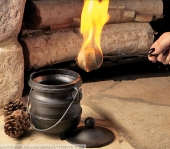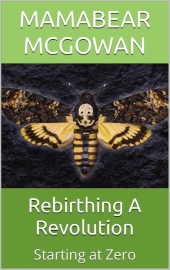
 15
15





 7
7




 11
11




No man is an island.
 12
12




Gardens in my mind never need water
Castles in the air never have a wet basement
Well made buildings are fractal -- equally intelligent design at every level of detail.
Bright sparks remind others that they too can dance
What I am looking for is looking for me too!

 10
10




 11
11




Visit Redhawk's soil series: https://permies.com/wiki/redhawk-soil
How permies.com works: https://permies.com/wiki/34193/permies-works-links-threads
 12
12




Jay Angler wrote:... there are a bunch of more primitive ways to start fires ...

 12
12




 11
11




Invasive plants are Earth's way of insisting we notice her medicines. Stephen Herrod Buhner
Everyone learns what works by learning what doesn't work. Stephen Herrod Buhner
 17
17




 9
9




Tim Siemens wrote:Good post. I like matches, but like you, I have found the degrade over time. Has anyone found a good storage option to keep matches viable in the long term? Perhaps I will need to do some experiments.
 7
7




 8
8




No man is an island.
 11
11




Jeff Lindsey wrote:After many years in many different extreme environments, with a fire being required to live a few times, I use a multiple source kit based solution.
... ALWAYS light the candle first. Use the candle to light the tinder, then put the candle out careful and save it. Use the foil from the flameballs to lay out the tinder on the wet ground.
... Flint and steel is fine for showing off, but I'd make sure to store char cloth (like they did) with my kit if I had to depend on it. I wouldn't be able to use a fire bow if I was wounded or on the run or freezing or didn't have access to hardwoods. The magnesium fire sticks that you strike on the back of your knife are neat looking, but are inefficient try hard props compared to a match or a lighter. Zippos are super high maintenance unless you smoke daily. Due to my terribleness as a boy, I am expert with a magnifying glass "bug laser", but fire is often needed on a cloudy day. Those flameless "storm proof" lighters are an excellent way to become familiar with regret and loss- like the loss of your toes from frostbite.
 5
5




"The only thing...more expensive than education is ignorance."~Ben Franklin
"We can easily forgive a child who is afraid of the dark; the real tragedy of life is when men are afraid of the light." ~ Plato







 7
7




Douglas Alpenstock wrote:Phil, I've seen those Coghlan's waterproof matches but never tried them. How do they hold up in the long term?
 11
11




Douglas Alpenstock wrote:
Butane Lighters
Granted, these have a waste problem, but you'll find Bic's in my pocket and scattered through my gear. And yes, they will work in freezing conditions -- just warm them in your hand for half a minute and shake vigorously.
Long term storage is possible. Here's the rub: exposed to moisture in the air, the manufactured flint will slowly swell to the point where the spring underneath can't push it up to meet the rotary striker. Sometimes you can whack the base hard on a brick and it will come free.
Moderator, Treatment Free Beekeepers group on Facebook.
https://www.facebook.com/groups/treatmentfreebeekeepers/





 11
11




Passionate advocate for living at a human scale and pace.
Help me grow the permaculture presence in Indiana https://permies.com/t/243107
Concise Guide to Permies' Publishing Standards: https://permies.com/wiki/220744
 7
7




Jim Garlits wrote:I wish we could go back to the days when most dudes carried a Zippo in their pocket. Heavier, but much more sustainable. Also a great introduction to how simple machines work.
 7
7




Michael Cox wrote:That said, if I wanted a guaranteed - light anywhere, under any conditions - firestarter I would probably go for a magnesium ferro rod. I bought a couple of large chunky ones from amazon a few years ago. They have a lovely soft metal. You can make a pile a metal shavings in a few seconds with the spine of your knife, and then a strike will ignite the pile. They are more work than the convenience of matches/butane etc... but I trust that with time and care I would always be able to get that initial spark going.
 10
10




Passionate advocate for living at a human scale and pace.
Help me grow the permaculture presence in Indiana https://permies.com/t/243107
Concise Guide to Permies' Publishing Standards: https://permies.com/wiki/220744
 9
9




"The only thing...more expensive than education is ignorance."~Ben Franklin
"We can easily forgive a child who is afraid of the dark; the real tragedy of life is when men are afraid of the light." ~ Plato
 8
8




 8
8




Douglas Alpenstock wrote:
Michael, do you mean the magnesium blocks with the flint striker on the side? I played with those many years ago and found them a frustrating gimmick that required ideal conditions. Perhaps they have improved since then?
I do have a few of the Ferrocerium flint striker rods in various kits as the last layer of backup. They throw a big, hot shower of sparks and last a long time. The kindling has to be correctly prepared though, or commercial kindling balls used. I'm told you can feather out the wick of a candle and light it with a ferro rod but haven't tried it yet. For storage, they are vulnerable to degradation by moisture and especially sea air -- that's why they ship with a layer of paint on the outside. Ferro rods would work well to light wood stoves and such on a homestead -- light kindling in a tuna can and slide it under the larger stuff.
Moderator, Treatment Free Beekeepers group on Facebook.
https://www.facebook.com/groups/treatmentfreebeekeepers/





 5
5




Moderator, Treatment Free Beekeepers group on Facebook.
https://www.facebook.com/groups/treatmentfreebeekeepers/





 4
4




Michael Cox wrote:This is the style of my preferred one.
Amazon - ferrorod
 8
8




 9
9




Douglas Alpenstock wrote:
Michael Cox wrote:That said, if I wanted a guaranteed - light anywhere, under any conditions - firestarter I would probably go for a magnesium ferro rod. I bought a couple of large chunky ones from amazon a few years ago. They have a lovely soft metal. You can make a pile a metal shavings in a few seconds with the spine of your knife, and then a strike will ignite the pile. They are more work than the convenience of matches/butane etc... but I trust that with time and care I would always be able to get that initial spark going.
Michael, do you mean the magnesium blocks with the flint striker on the side? I played with those many years ago and found them a frustrating gimmick that required ideal conditions. Perhaps they have improved since then?
I do have a few of the Ferrocerium flint striker rods in various kits as the last layer of backup. They throw a big, hot shower of sparks and last a long time. The kindling has to be correctly prepared though, or commercial kindling balls used. I'm told you can feather out the wick of a candle and light it with a ferro rod but haven't tried it yet. For storage, they are vulnerable to degradation by moisture and especially sea air -- that's why they ship with a layer of paint on the outside. Ferro rods would work well to light wood stoves and such on a homestead -- light kindling in a tuna can and slide it under the larger stuff.
Country oriented nerd with primary interests in alternate energy in particular solar. Dabble in gardening, trees, cob, soil building and a host of others.
 8
8




C. Letellier wrote:Something to be aware of is there are a lot of imports that the "magesium" is instead an alloy of metals mostly aluminum and nearly totally worthless for fire starting. A good ferro rod and real magnesium is effective.
 11
11




 6
6




Tim Siemens wrote:Good post. I like matches, but like you, I have found the degrade over time. Has anyone found a good storage option to keep matches viable in the long term? Perhaps I will need to do some experiments.
$10.00 is a donation. $1,000 is an investment, $1,000,000 is a purchase.

|
Villains always have antidotes. They're funny that way. Here's an antidote disguised as a tiny ad:
permaculture bootcamp - gardening gardeners; grow the food you eat and build your own home
https://permies.com/wiki/bootcamp
|




